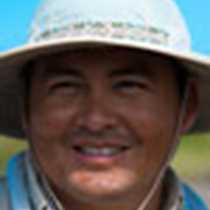Santiago Island
After spending two days in the western side of the Galápagos Archipelago we returned to the central area; Santiago Island, also known as James Island. It is the fourth largest island in the Galápagos. The bizarre volcanic landscape shows evidence that the island had volcanic activity in its recent past, since long fields of black basalt lava cliffs along the coast of James Bay are visible.
Our morning outing took place on a golden beach known as Espumilla; early rising explorers joined us for a walk along the beach and into the interior of the island. The magic of the enchanted islands surprised us. Hundreds of ghost crabs suddenly turned the beach red; they were looking for organic material on the peaceful beach. After walking for a few minutes, blue-footed boobies begun plunging diving close to the beach when suddenly juvenile Galápagos hawks hovered very close to us. The curiosity of these magnificent predators made them land and wander on the beach while our explorers, fascinated by their display, took pictures.
Later in the morning, we had other alternatives to explore the wonder of Santiago Island. Snorkeling was impressive due to the mosaic of species found in the warm water of Buccaneer Cove; sea lions, eagle rays, sharks, sea turtles and a variety of fish delighted the snorkelers while blue-footed boobies and pelicans tried to catch black stripe salemas that were all over the area near the kayakers.
In the afternoon, we anchored in James Bay. It was once inhabited by a small population of salt miners from Guayaquil and one of the few places that Charles Darwin visited during his voyage aboard HMS Beagle in 1831-36 around the Southern Hemisphere. Currently, the island is a national park and through the conservation efforts of Lindblad Expeditions and National Geographic this place is recovering the natural flora and fauna that for a long time was devastated by invasive species such as goats and pigs. Two alternatives were offered to please our guests, a peaceful hike along the shoreline of Santiago Island or to spend the rest of the day at the beach and try to snorkel one more time. Both alternatives astonished our explorers; hikers enjoined their walk among marine iguanas, sea lions and migratory birds, while explorers on the beach observed how two lava lizards fought tenaciously to achieve a piece of land. This magical day ended with an impressive sunset that enchanted our guests.




